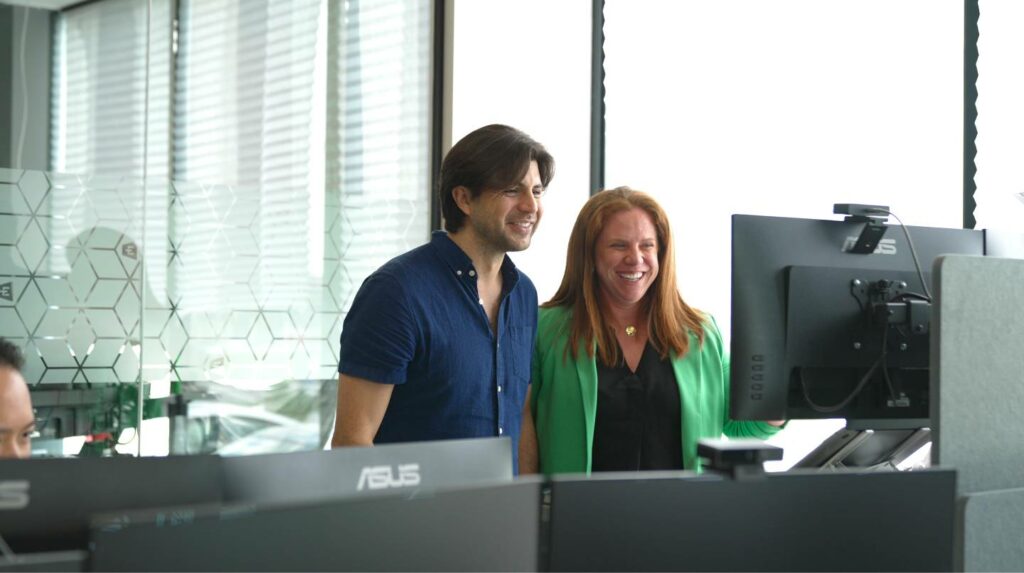I was in Las Vegas for the InfoComm 2014 trade show in late June. InfoComm is traditionally an AV industry trade show, but just like all things technology, it has been changing to reflect the current tech trends. One of the biggest changes at InfoComm in the last couple of years has been to embrace and advance real-time collaboration. Their focus is primarily on the room systems that are a part of the overall collaborative ecosystem. They are starting to understand that room systems play an integral part in the UC collaborative technology ecosystem.
One of the under-current themes that came through for me at InfoComm, was the new technologies that could advance an organization’s collaborative capabilities. These are technologies for organizations that are already using room systems as part of their real-time collaboration ecosystem, but want to advance the experience.
Why would they want to do that? It’s because they see the payoff that they are getting from collaboration already and they want to continue cashing in.
How can they do that?
- By advancing the collaborative experience to make it more “like being there”
- By making it easier to collaborate
- By making the experience richer (sometimes better than being there)
These technologies are for the 28% of companies that are beyond the first 2 stages of real-time collaborative evolution. Reminder – most companies (72%) have a collaborative environment that is either ‘Unsupported’ or ‘Not Integrated’.
To continue your journey to becoming a more advanced collaborative organization, you need to move your real-time collaboration from being a 4-6, out of 10, to say a 7-8, out of 10. Here are a couple of technologies that can help you do that.
Array Telepresence:
High End Telepresence rooms can cost in the range of $300K to $750K. Telepresence is the name used for the most life-like video conferencing implementations; the implementations that are closest to “being there” – see this blog for more info.
Array gives you a similar Telepresence experience for about $15K per room (to take full advantage of this technology it is ideal to have this system installed at both ends of the call).
One of the biggest problems with video conferencing implementations in typical corporate meeting rooms is what I call the “Boardroom Bowling Alley” effect. I wrote one of my first blogs on this topic, featuring a dual camera solution from Polycom that helped eliminate this effect. I think Array’s solution is more effective because it turns the “Boardroom Bowling Alley” into a Telepresence room vs the Polycom Eagle-Eye dual camera solution or Cisco’s Speaker track solution. With Array’s solution you get to see everyone in the room at anytime, close up – just like a Telepresence experience, while the Polycom or Cisco camera experience focuses the camera on the active speaker. By doing that it makes the active speaker a large image on your screen on the far end, but you can’t see the rest of the people and what they are doing or how they are reacting.
Ironically, 1) they are all camera solutions to the same Boardroom Bowling Alley problem, with different approaches, and; 2) the Array solution was developed by the same guys that built Polycom’s RealPresence, high-end Telepresence systems.
The same guys who built the $750K high-end experience, just shrunk their solution to $15K per room That is cool!
Here is an image from the Array website that shows how their camera technology can transform an ordinary boardroom.
The two key components of the solution are the camera and the Array Equal-i 2S Image Improvement Processor. You can see from the second image above that everyone in the room looks like they are sitting around a Telepresence table – but they are not, it is the same table from the first photo.
One of the big improvements in the two images is that the video is now displayed on both screens making everyone bigger. This uses one of my 5 Technology Deployment Principles (upcoming blog) – maximize screen real estate to make things bigger. In order to free up the second screen to be used as a part of the video image, Array has taken the content sharing feature and put it onto the boardroom tabletop, which is a principle used in high Telepresence rooms. There would be an extra cost (in addition to the $15K) to put a few small monitors on the table to see the content. With an Array Telepresence system installed in two separate rooms on a call, the experience would be that of a full immersive system where both rooms would be able to see a dual screen improved view of the far end. There is no additional codec purchase required for this system, it will work with existing Cisco, Polycom or Lifesize codec equipment. The Array box encodes and decodes the expanded view at either end of the call.
To summarize what Array’s technology does:
- Brings farthest participants up close and personal
- Improves eye line and meeting format
- Powers dual displays using a single video codec
- Conceals camera(s) and brings wide format display
Early indications are that the highest interest for this technology is coming from companies that have already deployed and are using video conferencing for day-to-day business. Companies who are making a marginal, additional investment in technology to upgrade the collaborative experience for their users go from say a 4 out of 10, to a 7 or 8, out of 10.
For those companies who have already made an investment in room systems throughout their organization and are making good use of these systems, an extra $15K per room is not a very big additional investment to amp up the experience by 30-100%. Considering all the investments in equipment, network and user adoption, another $15K to significantly enhance the experience will breath a longer life into many of these rooms versus doing a total technology refresh of some kind.
Note: “Companies that have already deployed and are using video conferencing.” This is a critical phrase. I would not recommend this technology for deployments that would ‘hope’ to drive adoption, simply by upgrading the technology.
We at ET Group are getting on board to offer and support this technology in the Canadian marketplace. If you are interested in exploring the possible deployment in your video conferencing room systems, send an email to us through our contact page and we will get back to you.
More from InfoComm on advancing collaboration in your organization in Part 2 of this blog. Stay tuned!







